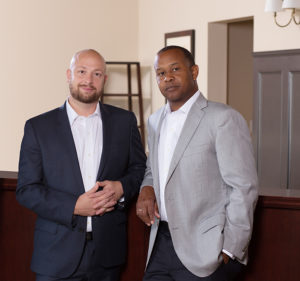 Slips and falls are the most commonly reported workplace injuries. According to the U.S. Department of Labor, approximately fifteen percent of all workplace fatalities are the result of slip and fall accidents. Slips and falls can happen on any type of surface, in any profession. Investigations show that most slips and falls that have caused disabling injury could have been prevented.
Slips and falls are the most commonly reported workplace injuries. According to the U.S. Department of Labor, approximately fifteen percent of all workplace fatalities are the result of slip and fall accidents. Slips and falls can happen on any type of surface, in any profession. Investigations show that most slips and falls that have caused disabling injury could have been prevented.
Federal Regulations for Slips and Falls
Regulations associated with slips and falls are outlined completely in the Code of Federal Regulations in a section called Subpart D. This section covers cause and prevention of slips and falls. These are the general guidelines that are used to determine whether a work place is safe and relatively free of slip and fall hazards. All workplaces have safety hazards to some extent, but it is the employer’s responsibility to mitigate these hazards as much as possible. Employers are also responsible for keeping workers informed about what those hazards are and how to keep from getting injured.
The Occupational Safety and Health Administration, or OSHA as it is commonly know, is the organization that ensures employer compliance with safety regulations. OSHA was established in 1971 to help protect workers from preventable injuries. Nearly all work places are subject to the regulations set by OSHA.
Causes and Prevention of Slips and Falls
Although the majority of slips and falls occur on surfaces that are at the same level, there are guidelines for prevention of many different causes of possible slips and falls. All of the causes of slips and falls can be prevented or mitigated by properly informing employees and putting slip and fall prevention systems in place. Cautionary signs, such as wet floor signs, are an example of a prevention system.
Weather conditions such as ice and snow
While it is not possible to prevent ice and snow from forming or accumulating, it is possible to minimize the safety hazard that ice and snow pose. If a workplace is indoors, but employees must travel through a parking lot, having a system for removing ice and snow is imperative. If a work site is outside, employers can put systems in place to ensure that employees are wearing slip-resistant footwear.
Clutter or liquid on the floor
Water, grease, oil, and food are examples of contaminants that pose a slip and fall hazard in many workplaces. Health care and restaurant employees are particularly susceptible to injuries from wet floors. There are many different ways that these types of injuries can be prevented.
Prevention systems for wet floors:
- Keep floors as clean and dry as possible
- Display highly visible wet floor signs when needed
- Require employees to wear slip resistant shoes
- Provide a detailed cleaning system for floors
- Ensure that proper cleaning chemicals are always available
- Floor mats can be used
Floor mats
Although floor mats can be used to add traction to floors that are perpetually wet, improperly placed floor mats can pose a hazard. Floor mats should always be flush with floor and completely unrolled. Using floor mats that are too big for the area or running mats up against walls can form a tripping hazard.
Irregular walking surfacesStairs and railings
Stairs should be in good repair, with functional railings. If a railing is loose, it can pose a greater hazard and needs to be quickly repaired. Stairs that are uneven can be hazardous, and should be altered or marked. Marking stairs can increase visibility.
Inadequate lighting
Improper lighting may prevent employees from seeing any issues that may cause slips and falls. Any markers or signs that may have been put in place will be ineffective if the area is not properly lit. Employers should replace bulbs and use bright lighting in areas that have a high potential for causing slips and falls.
OSHA Assistance for Slip and Fall Prevention
If an employer is unsure of whether the workplace is compliant with all federal regulations regarding slips and falls, OSHA can provide assistance. An OSHA inspector can come out to the job site, and perform a free inspection and consultation with the inquiring employer. A requested OSHA inspection will not incur fines if violations are found. If an employer wishes to obtain a copy of slip and fall guidelines, these can be found online or can be requested from an OSHA office. OSHA does not only provide a complete chronicling of Subpart D, there is also an easy to follow fact sheets that outline employer responsibilities for prevention of slip and fall hazards.
Employer Non-Compliance with Slips and Falls Prevention
If an employer does not take steps to mitigate slips and falls, the employer may be subject to fines and workman’s compensation claims. If the non-compliance of an employer to OSHA guidelines has caused injury or death, the employer could even be subject to litigation. If an employee has sustained an injury on the job, and is having trouble understanding options available, an attorney should be contacted.
Sources:
Bell, Jennifer, James Collins, and et al. Slip, Trip, and Fall Prevention for Healthcare Workers. Department of Health and Human Services, n.d. Web. 12 Sep 2013. <http://www.cdc.gov/niosh/docs/2011-123/pdfs/2011-123.pdf>.
“Healthcare Wide Hazards: Slips, Trips, and Falls.” United states Department of Labor. U.S. Department of Labor, n.d. Web. 12 Sep 2013. <https://www.osha.gov/SLTC/etools/hospital/hazards/slips/slips.html>.
“Slip, Trip, and Fall Prevention.” Minnesota Department of Administration. Minnesota Department of Labor, n.d. Web. 12 Sep 2013. <http://www.mn.gov/admin/government/risk/safety-loss-control/slips-trips-falls/index.jsp>.
